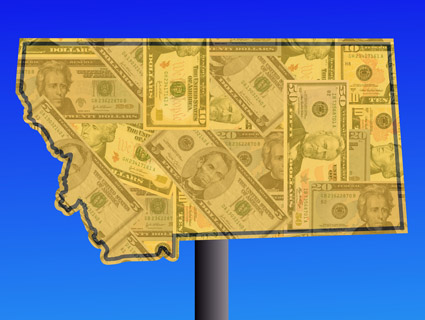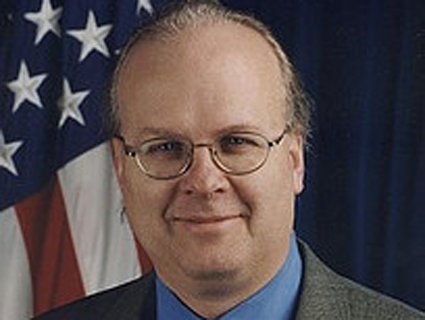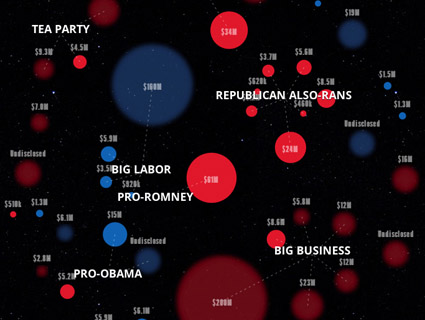If on November 6 Mitt Romney wins the White House and Republicans retake the Senate, they’d be remiss not to thank dark money in their victory speeches.
That’s because $8 out of every $10 in dark money—campaign cash whose source is hidden from the public—spent so far in the 2012 elections went to electing Republicans and defeating Democrats. Through November 1, dark-money groups, including politically active nonprofits, trade groups, and labor unions, spent $213 million on elections, and 81 percent of that money backed GOPers, according to a new analysis by the Sunlight Foundation. US Senate races attracted the most dark money, at $86.4 million; the Senate fights seeing the most dark-money seep in are Virginia ($19 million), Ohio ($13 million), Nevada ($12 million), Wisconsin ($10 million), and Montana ($7.5 million), Sunlight found.
All told, the amount of dark money spent by November 1 accounted for 22 percent of all outside cash in the 2012 elections. Here’s a breakdown of dark money spending so far:
Dark-money groups have, to no one’s surprise, ramped up their spending in the final weeks before Election Day. But the uptick in dark money is especially true for pro-GOP groups as they dump money into the presidential race and House and Senate campaigns:
And below is a breakdown of the biggest dark-money players in American politics. Shocker: Eight of the top 10 biggest spenders back Republicans. Not only that, but those top five players—Karl Rove’s Crossroads GPS, the US Chamber of Commerce, Grover Norquist’s Americans for Tax Reform, Americans for Job Security, and American Future Fund—account for 64 percent of all dark-money spending.
Sunlight Foundation’s entire analysis is worth the read. But as Sunlight’s Lee Drutman notes, his report doesn’t fully capture the extent of secret spending in US elections. Dark-money groups not only mask their donors; they fail to even disclose all their spending. “Ultimately,” Drutman writes, “we will probably never know where this dark money comes from, nor the true spending numbers.”

















